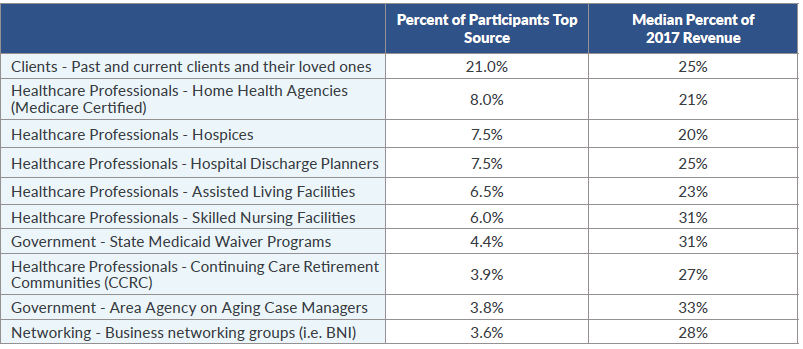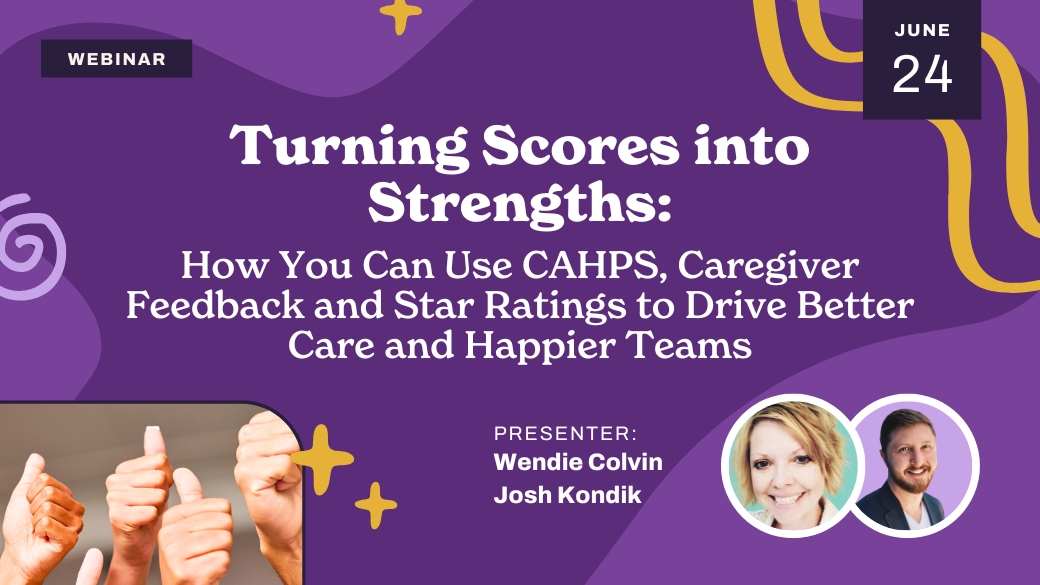Home Care Marketing 101: How to Create a Referral Marketing Strategy

How many referral sources should you aim to work with, and which ones? We’ll discuss it all here. This blog is part 2 of a series on working with professional referral partners. Learn when it’s time to hire a sales rep here and how to network with professional referral sources here.
Getting home care referrals can be tough. Without a steady pipeline of solid referrals, your business will wither and die over time. To succeed, you need the right strategy, the right approach, and the right people to pull it off.
In our last article, we discussed when to hire a full-time sales rep. Today, we’re turning our attention to the question of how to create an overall strategy to work with professional referral sources. Whether you have a full-time sales rep or you’re doing the networking yourself, it’s critical that you have a good plan in place. Without a good plan and a solid strategy, you’ll be spinning your wheels.
To help you create a better referral marketing strategy for your home care agency, we’ll be addressing three key questions:
A caveat: in this article, we’re talking about securing home care referrals from professional referral sources like hospitals and home health agencies. It’s also extremely important to work on generating referrals directly from your own clients through word of mouth, as well as finding new clients through your own marketing and advertising. However, referral marketing is its own beast, and that’s the topic we’re tackling today.
- LIVE WEBINAR
Turning Scores into Strengths: How to Use CAHPS and Star Ratings to Create Positive Care Outcomes
What Types of Professional Referral Sources Should You Target?
Here are the top referral marketing sources that agencies are using, according to the 2018 Home Care Benchmarking Study. (Note: updated information will be available when the Fall Edition of the 2019 Study is released in September.)

Note the emphasis on healthcare partners. Shelle Womble, a home care sales and operations coach at corecubed, explains this: “The medical community in general (home health agencies, hospice, care managers, and assisted living) are typically “low hanging fruit” for target referrals. The clients that come from these sources are generally vetted and in need of care.” While these can be competitive to get in with, they’re the bread and butter of most agencies’ referral strategies.
In addition to these top sources, consider other sources like the following:
How Do You Choose Which Sources to Focus On?
There’s a lot to choose from. While you should cast a wide net, you’ll need to choose the right sources to focus on. We recommend using these three factors in your criteria.
Volume. How many seniors are they working with, and consequently how many referrals are they going to be able to provide you? The more the better—it’s a lot easier to keep good relationships with a few very strong sources than to juggle many sources that only occasionally provide referrals. This is what makes hospitals such a useful (though competitive) source of referrals.
Existing relationships that can help you get in the door. If you’re concerned about a high level of competition with other agencies and/or the challenge of staying top-of-mind, focus on the sources where you may already have some type of in.
If so, you have a head start with that source—take advantage of it!
Potential for synergy as partners. Steve “The Hurricane” Weiss, a well-known home care marketing consultant, calls these “power partners” and says they should be a cornerstone of your strategy. These are partners who serve a similar target market as you, but whose services are complementary to yours rather than competing.
Typically, these include other post-acute care like home health or hospice. The advantage of partners like these is that it’s easier to form a tight relationship and help to not only build each other’s pipelines but also expand your each other’s professional networks.
There are certainly other factors to consider, but these are three major ones that can help guide you as you’re deciding where to put in your efforts.
How Many Referral Partners Should You Be Working With?
While it depends on the size and circumstances of your agency, a good rule of thumb is that you should have at least 20 solid sources referring.
Note that this doesn’t mean that you should necessarily limit yourself to 20; in fact, you’ll probably have to network with a lot more sources than that to ensure 20 solid ones.
It also depends on whether you have a full-time sales rep. Consider this advice from Shelle Womble of corecubed:
“A full-time sales rep can easily routinely call on 100 to 120 accounts over the course of a quarter and have success in doing so. A selling manager [owner doubling as salesperson] may only be able to cultivate and groom 20 accounts. . .
A well-rounded agency needs business to come from many sources, including word of mouth, reputation, digital marketing, internet searches, and community relationships gained from local sales efforts. The rule of thumb is to be sure that all of your eggs are not in one basket. . .
An agency with revenues of $2M or more should have at least 20 solid sources referring.”
Shelle’s point about not putting all your eggs in one basket is especially important. Keep enough sources that if your pipeline from one of them decreased or was lost, it wouldn’t cripple your overall pipeline.
Other Tips to Remember
Factor these in as you create your referral marketing strategy.
First, never go in to meet a referral source unprepared. This entails not only having a plan for the meeting itself, but ensuring that your agency is prepared to be responsive and is ready to staff any cases you get from them. See our guide to preparing to meet with professional referral sources here.
Second, ensure that you have a system in place to track every visit and communication with referral partners. We very strongly recommend that you use a CRM (Customer Relationship Manager) for these communications, just like you would with potential clients. Check out our guide to CRM software here.
Be Persistent!
According to Steve Weiss of Hurricane Marketing, it takes 8-12 visits before a referral source will start sending referrals your way. So stick with it! However, it’s also important that you make the most of each visit so that you don’t lose your opportunity before you hit 8-12 visits. We’ll talk more about what to do in these visits in our blog next week.
What challenges have you experienced in creating a referral marketing strategy? Let us know in the comments below!






